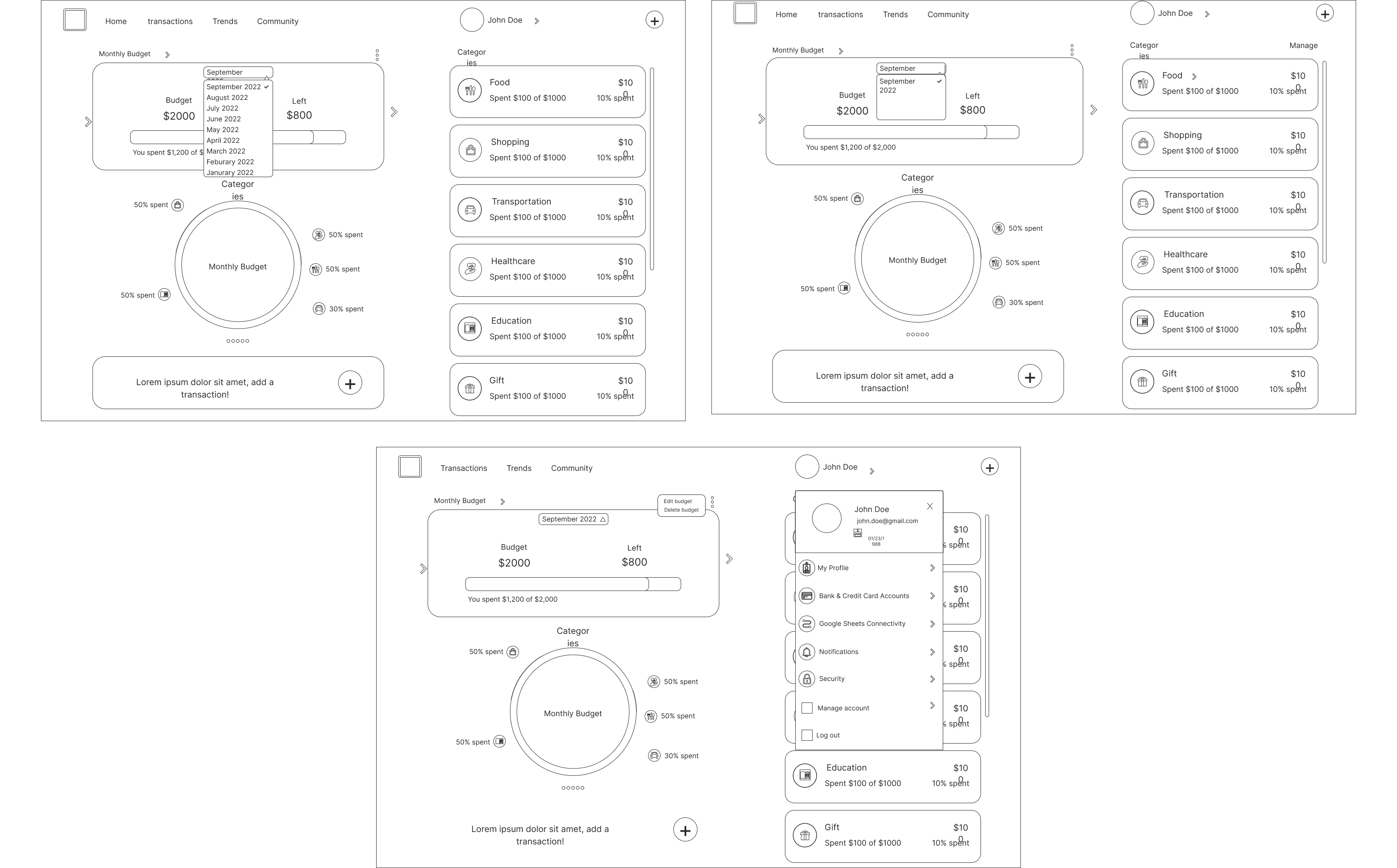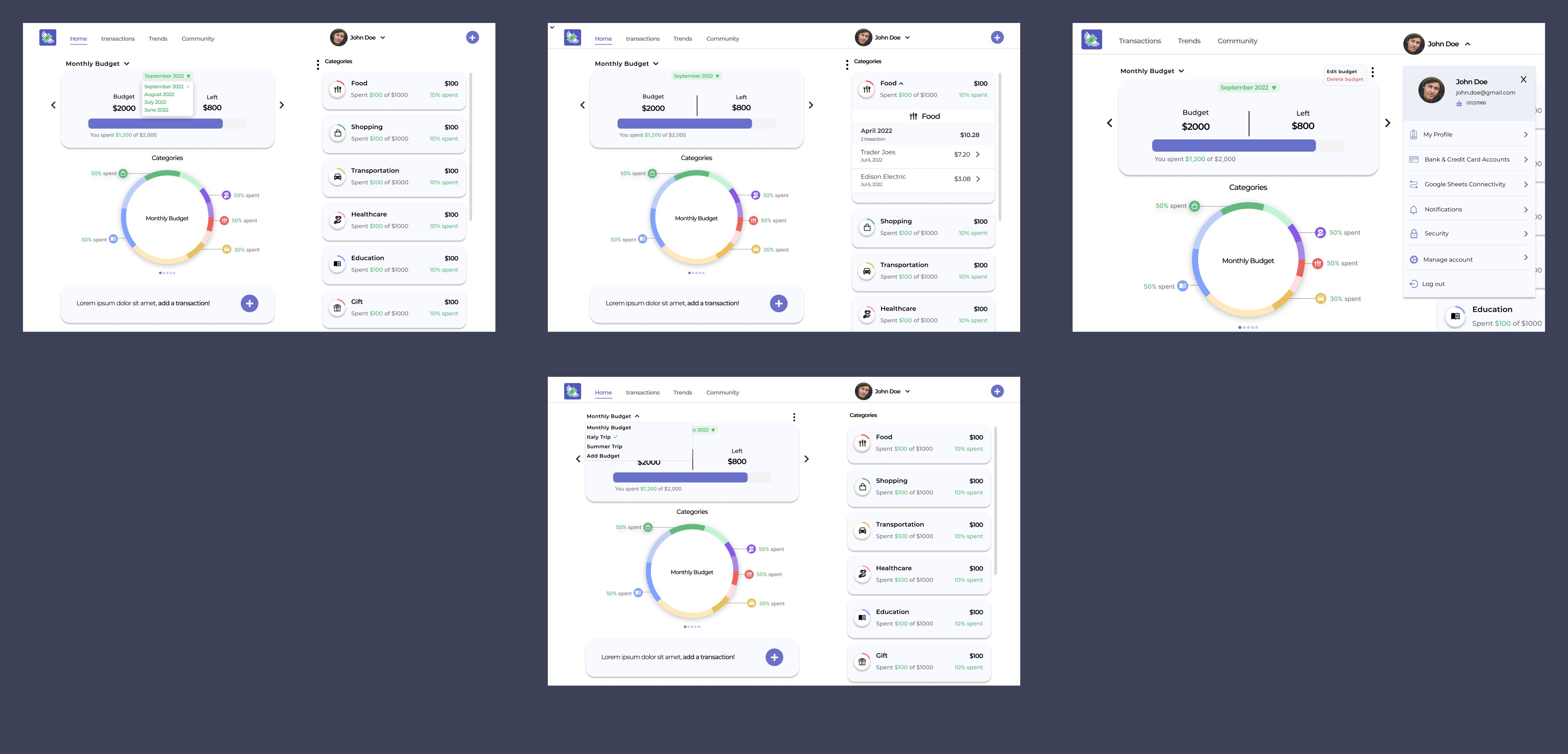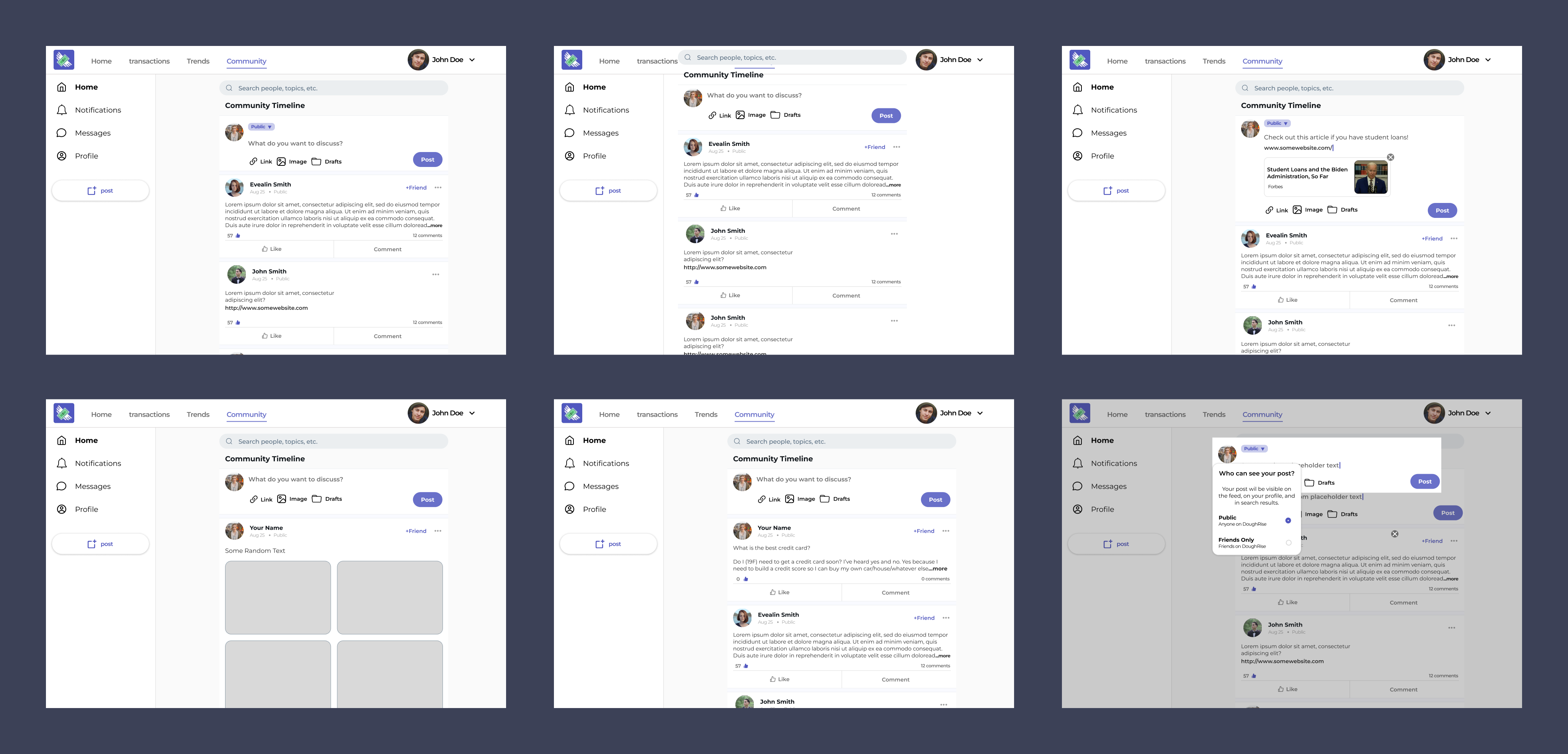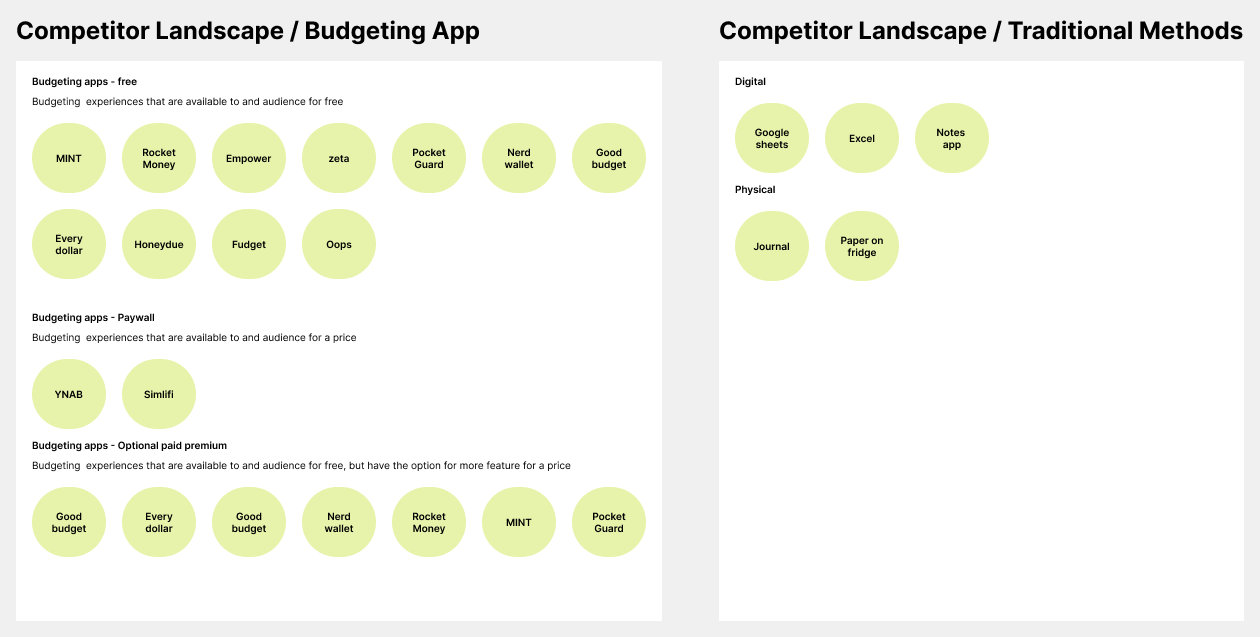
Through each in-depth exploration, we honed in on crucial insights and distinguishing factors that held significance for our team. Grasping the unique attributes that define a product's market suitability and the specific demographics it targets provided us with a comprehensive outlook in this domain. After concluding each deep dive, we compiled all the findings onto a Figma board to create a comprehensive overview.
Following that, we conducted a workshop to extract the essential insights collectively among the team, which proved immensely valuable. I frequently consulted these insights during the ideation phase.
Subsequently, we initiated the process of consolidating our research into various thematic elements that could serve as the foundation for our value proposition. Employing a preliminary "Jobs To Be Done" framework, we focused on discerning user needs and motivations, ultimately creating a range of potential value proposition avenues for validation. In tandem with this effort, we conducted extensive user research, involving interviews with 20 individuals to gain qualitative insights into their money management practices. We extracted pivotal insights from these interviews and then conducted an affinity mapping session to categorize and organize these insights into thematic clusters.
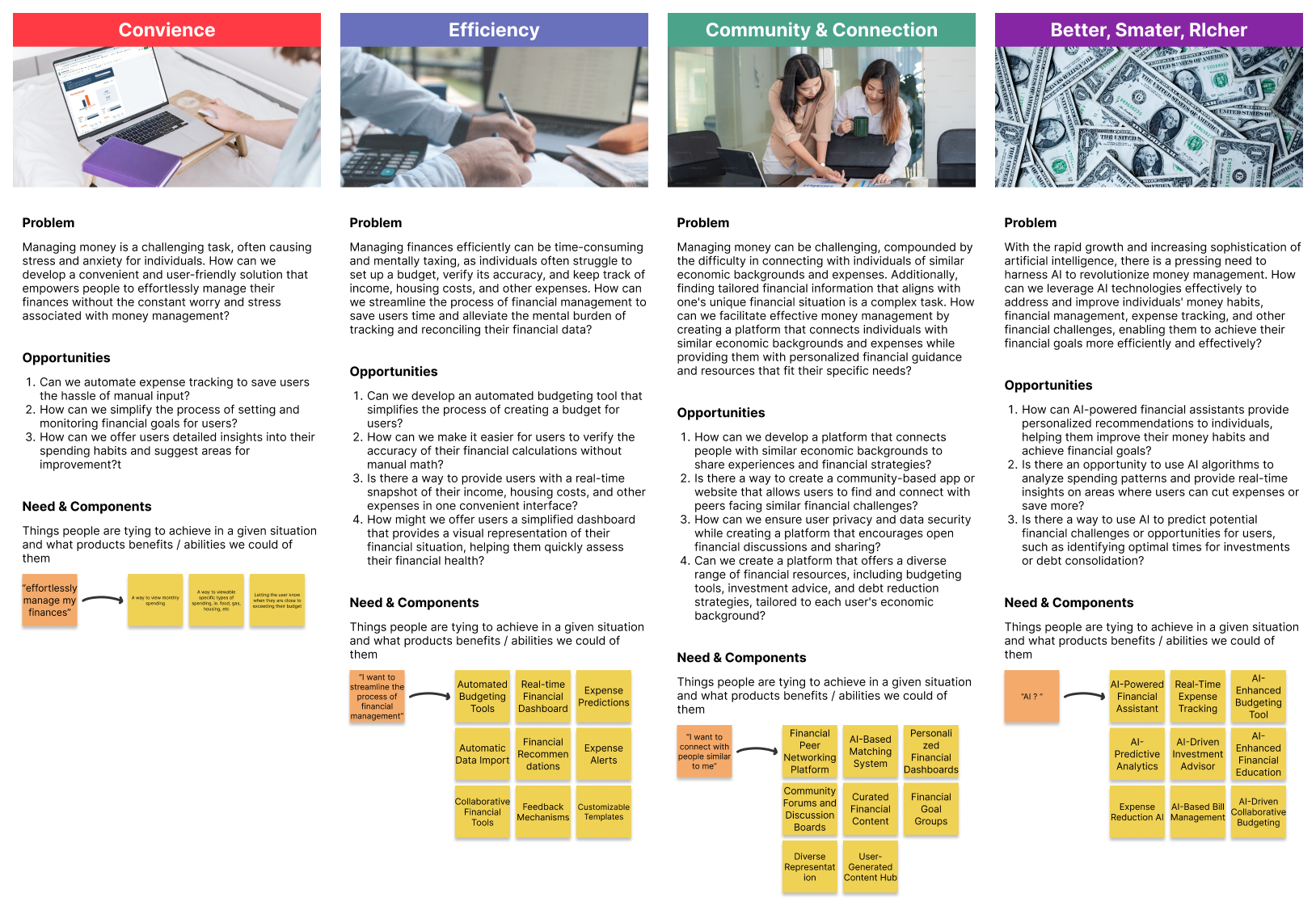
The last step in this process involved a collaborative workshop that brought together team members from different areas, including product, design, ownership, and engineering. During this workshop, we examined all the information, patterns, and directions we had explored up to that point. We then condensed these findings into a final collection of value propositions that needed validation. To achieve this, we distributed a comprehensive survey to various audience segments, asking them to rate which direction appealed to them the most. It is crucial to get this right and have a clear understanding of what will set DoughRise apart, as it is vital for the ongoing success of our project.
